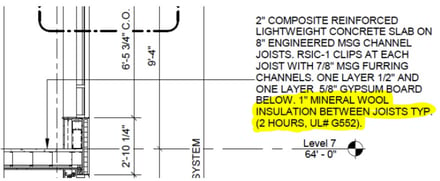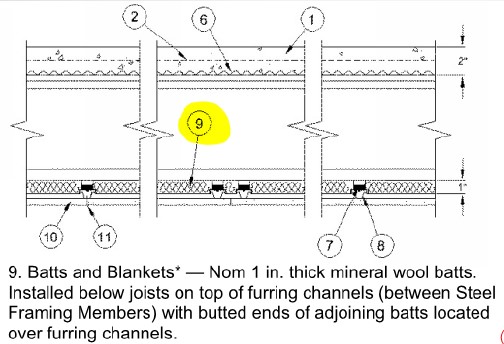In my recent post, When
Specifiers Engage in Magical Thinking, I described what happens when a
specifier believes that putting more instructions into a specification will
make for a better outcome. Never mind
whether or not those instructions were appropriate or even made sense. It turns out that dismantling an
abysmally-written specification, while useful and informative (and
entertaining), is easy. Too easy, even. Getting inappropriate language removed from
specifications is low-hanging fruit because it’s right there and we can see it
and react to it. We can explain why it’s
wrong, predict what the results will be, and then see what happens.
Far more difficult, and a more pervasive
problem, is identifying what is not stated
in the specifications, but should be.
Some specifiers believe that whatever they say in a specification will
magically make everything come out the way they want, but it’s far more common
for specifiers to believe that there will always be something somewhere in the
specifications will magically cover them for errors in the drawings and
omissions in the specs. Maybe they
believe that a reference standard includes sufficient information, or that
contractors will know the code well enough to keep them out of trouble.
Case Study
When I teach my CSI chapter's CDT class every
year, I include an example of a failure from my own history as a specifier, one
that serves as a reminder to try to query every paragraph and think about what
needs to be added.
In this example, from an eight-story hotel
project, a detail indicates a floor-ceiling fire rating that is ubiquitous
throughout the project. The assembly’s UL design number
is helpfully called out on the detail:

The UL design refers to a required insulation
layer, and labels the layer “batts and blankets.” The drawing says “mineral wool insulation”
but not what type.
The specification is mostly mute about what
the batts and blankets product is meant to be.
The closest thing is a reference to acoustical fire batts in the drywall
section, meant for partitions.
The UL design, for its part, shows the
insulation like this:

So far, the UL design and the drawing seem in
alignment, and the specifications’ omission of an actual product appears to be
a non-issue. The contractor submitted a
mineral wool blanket product for this assembly, Thermafiber SAFB.
During review of the submittal, the project
architect double-checked the UL assembly and noticed something. He came to my desk with a question (I was an
in-house specifier at the time so impromptu questions were very common). The UL design had named a different product.

Isolatek CB is not a “batts and blankets”
product. It’s a rigid high-density
mineral wool board and, as Murphy would have predicted, is more expensive than
the submitted product. I don't recall
how much more, but given there were tens of thousands of square feet of product,
the gap was substantial.
The architect’s question: “Is there something
in the spec that we can use to compel the contractor to use the correct product
without incurring a change order?”
The answer we found after reading the specs, unfortunately, was “sort of, but not really.” The specifications included an instruction that fire rated assemblies be constructed using products required by UL designs. But the repetition of incorrect and vague information from the drawings to the specs ("mineral wool blankets") gave the contractor information he believed he could rely upon to buy out the project. The architect and owner chose to try to enforce the “fire rated assemblies” provision, which led to a lengthy dispute.
Lessons Learned
Being wrong is a humbling experience. Acknowledging your mistakes is hard, and changing your approach is harder.
Specifications will have omissions. That’s inevitable, no matter how diligent a
specifier is. Part of the problem is the
‘text deletion’ model of commercial guide specifications: it’s far easier to
delete something that you see and decide isn’t needed, than to add something
that’s missing. Adding relevant
information gleaned from discussions with the design team and spotted on the
drawings and extracted from reference standards or UL designs takes practice
and experience.
There’s an element of magical thinking in not specifying enough - a reliance on the belief that somewhere in that huge stack of paper is a sentence that will help me. The way to avoid this is to just do the work of deeply understanding the project requirements, and including the information necessary to achieve them, end neither less nor more than that.
